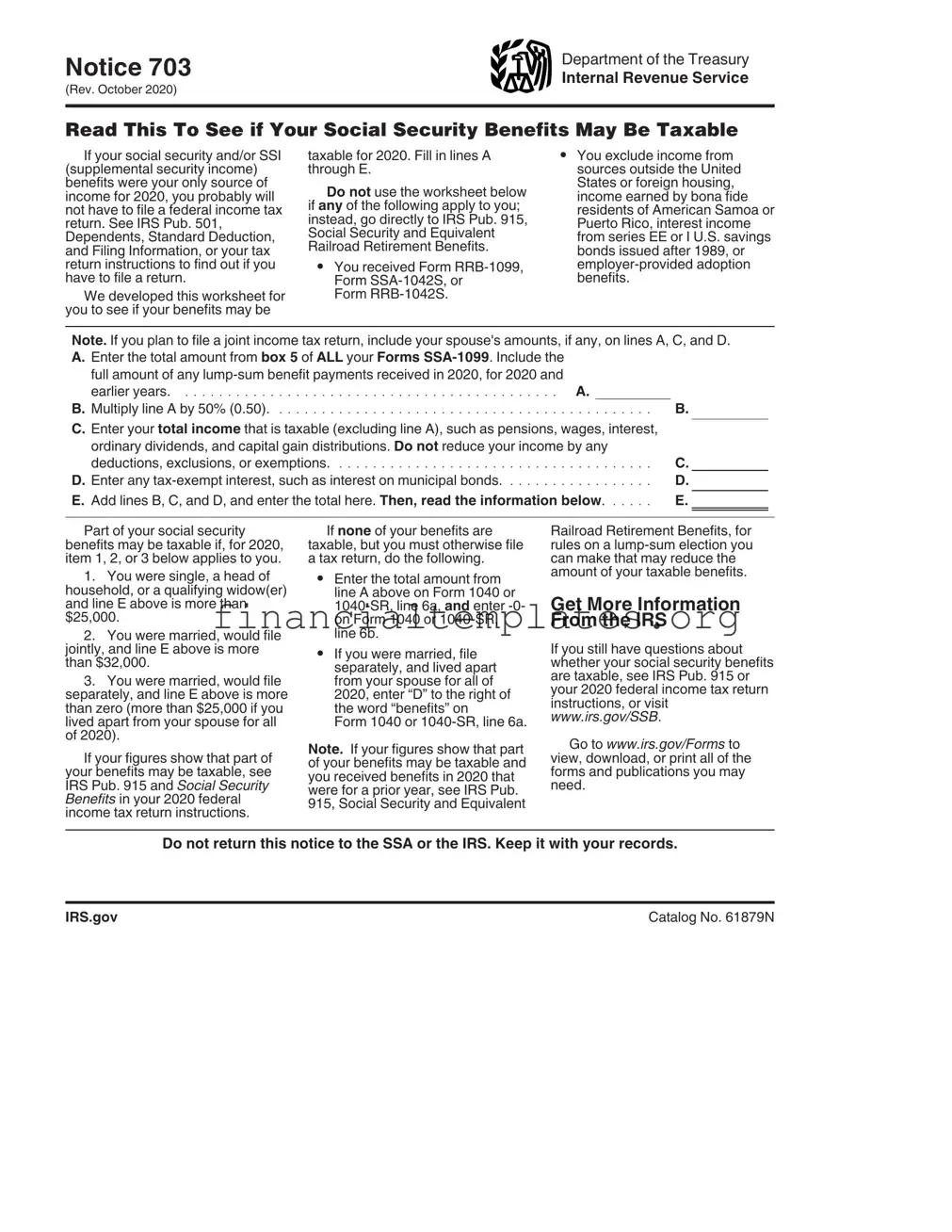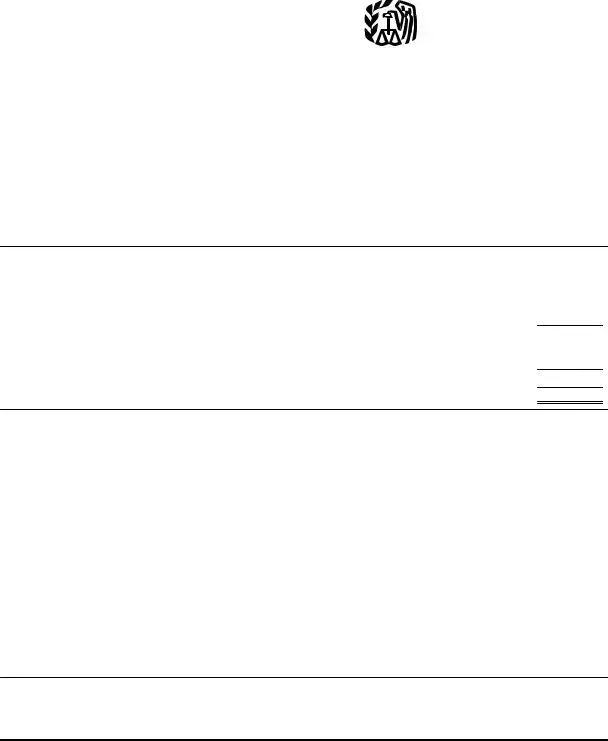The IRS Form 1040, often referred to as the U.S. Individual Income Tax Return, bears similarities to the IRS Notice 703. Both forms are integral to understanding and fulfilling one's tax obligations, albeit serving different functions. While the Notice 703 is typically used to help a person understand how much of their Social Security benefits may be taxable, the Form 1040 is where this information, along with other income sources, is reported yearly. Essentially, findings from Notice 703 can affect the income reported on Form 1040, making these documents interconnected in the process of determining tax responsibility.
Form SSA-1099 is another document that shares a connection with the IRS Notice 703. This form is issued by the Social Security Administration and details the total amount of social security benefits received during the year. For individuals who receive social security benefits, the SSA-1099 is crucial for accurately filling out the IRS Notice 703, as it provides the raw data needed to calculate the portion of benefits that may be subject to taxation. Both documents play pivotal roles in managing taxes related to social security income.
IRS Schedule B (Form 1040), or Interest and Ordinary Dividends, also shares similarities with IRS Notice 703. Schedule B is designed for reporting interest and ordinary dividends, which can contribute to an individual's overall income, thus potentially affecting the taxability of social security benefits. Specifically, high amounts of interest and dividends can make more of one's social security benefits taxable, per the calculations carried out with Notice 703. In essence, both documents are instrumental in showcasing how various types of income can impact one's tax liabilities.
The IRS Form 8857, Request for Innocent Spouse Relief, while distinct in its purpose, has a tangential similarity to the IRS Notice 703. Form 8857 is used when one spouse seeks relief from joint tax liabilities. This document underscores the complexity of tax obligations and how circumstances such as marital status can influence them. In situations where social security benefits are jointly reported, the outcomes of Notice 703 could be impacted, indirectly relating the two forms in cases of marital tax issues.
Lastly, IRS Form W-4V, Voluntary Withholding Request, has a practical connection to the IRS Notice 703. Individuals receiving social security benefits may decide to have federal taxes withheld from their payments by submitting Form W-4V. This pre-emptive measure relates closely to the insights gained from Notice 703 regarding how much of one's social security benefits may be taxable. Effectively, individuals can use Notice 703 to gauge their potential tax liability on benefits and adjust their withholding accordingly via Form W-4V, thereby linking the operational purposes of these two forms in tax planning and management.

